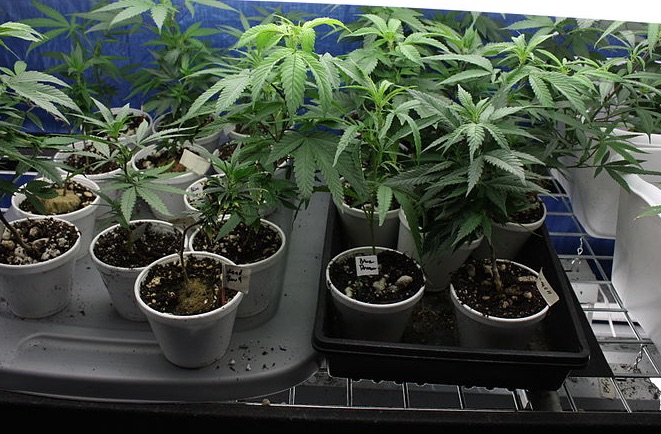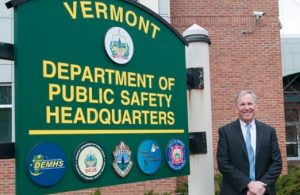
DON’T DRIVE HIGH: Critics and opponents of legalization alike agree that impaired driving for any substance is a serious matter to be considered by state leadership.
At the latest Marijuana Advisory Commission meeting, Thomas Anderson, commissioner for the Department of Public Safety and chair of the subcommittee on highway safety for the commission, said marijuana legalization would lead to increases in highway fatality rates.
“When you have increased use of marijuana or legalization of marijuana, you’re gonna see more fatalities on your roadways. I think the data does support that, and I know there are different views on that, but I would feel comfortable taking that to a jury and trying to convince them of that,” he told the subcommittee.
In an interview with True North Reports, Anderson reiterated that he sees a correlation between legalization and deadly highway accidents in reports analyzing marijuana states.
“What we looked at what was the high quality research on marijuana use and the increased risk of motor vehicle crashes and motor vehicle fatalities, and whether legalization caused an increased risk. … To me the data supports that conclusion.”
One study cited in the Roadway Safety Subcommittee Report is the Rocky Mountain High Intensity Drug Trafficking Area Report for October 2017. It concludes that from 2009 to 2016 the total number of traffic deaths increased 16 percent. During that same period, the number of deaths involving drivers testing positive for marijuana increased from 9 percent to 16 percent.
Another study cited is by researchers Rune Elvik and Ole Rogeberg from the Norwegian Center for Transport Research and the Ragnar Frisch Center for Economic Research, respectively.
Conclusions include that acute cannabis intoxication “is related to statistically significant risk increase” and “the increase is of low to medium magnitude.”

As commissioner of the Department of Public Safety, Thomas D. Anderson oversees state police, emergency management, forensics and fire safety, among other divisions.
The study compares average marijuana impairment to driving with a blood-alcohol content of about .04 to .05 percent (.08 percent would warrant a DUI arrest).
An ongoing challenge for measuring marijuana’s roadway safety impact is that to date there is no ideal method for measuring impairment level. The problem with blood tests is that THC, the active ingredient in marijuana, can stay in the blood for up to a month after consumption, which makes it a questionable indicator for impairment at the time of an accident.
Eli Harrington, co-founder of the publishing company and legalization advocacy group Heady Vermont, told True North that any proposal for a limit of THC blood content to determine impaired driving is a bad policy.
“Experts from other states have recommended that Vermont not do this,” he said. “The idea that there is a per se limit of X-amount of nanograms in your bloodstream is a terrible idea because most medical patients who are legally using this will have that much residual in their bloodstream at any time and not be impaired.”
Anderson addressed this concern as well.
“All of these studies point out the limitation that there’s a difference between marijuana association and causation,” Anderson said. “All of these studies identify limitations on the ability, if you have a fatality, to say ‘the causation was the influence of marijuana’ versus something else.”
One solution already in place is the training of Drug Recognition Experts (DREs), special officers who can look for the subtle signs of having used marijuana — which is not always as obvious as someone who is intoxicated from alcohol. There are currently 53 DREs active in the state.
Anderson reiterated that the net effect of marijuana legalization appears to be a net increase in crashes and deaths.
“To me what the consistent data shows is, that when you have this increased use of marijuana or legalization of marijuana, that consistently in the states that have done that, their fatalities have gone up.”
Another concern Anderson discussed was the risk of combining alcohol and marijuana together.
“We had a number of studies that said with the concurrent use of these substances it was worse than just alcohol alone and marijuana alone,” he said. “One of the other studies indicated that the risk of crash initiation with concurrent use of alcohol and marijuana among drivers may increase by more than five-fold when compared to drivers who test negative for both alcohol and marijuana.”
Anderson emphasized that the existence of this marijuana commission does not imply that legalization is a foregone conclusion.
“The work on this commission will inform the governor’s decision on whether the legalization of marijuana is right for Vermont,” he said. “In addition, if it is the right decision for Vermont, then how should it be implemented?”
Harrington said while he respects the work of the commission, he questions its necessity and its composition.
“The legislature spent hundreds of hours working on this, and Gov. Scott didn’t start considering this until it was on his desk. … And there are zero patients on the commission, there are zero caregivers, there are zero people in the cannabis industry at all.”
The commission has another round of recommendations due on Jan. 15. A further set of recommendations are due on Dec. 15, 2018.
Anderson said he can’t predict whether the lawmakers will act further on marijuana legislation this session while these recommendations are still forthcoming.
“You’d have to ask the legislature that. … I would anticipate that it’s going to come up in the legislature this session.”
Michael Bielawski is a reporter for True North Reports. Send him news tips at bielawski82@yahoo.com and follow him on Twitter @TrueNorthMikeB.



So we now have a “No Hand Held Phone ” law while driving ( How’s That working ) from what
I see not very well , I see ten a day on there phones while driving (shameful ) Apparently they
haven’t been told about this law or the fines just aren’t stiff enough to get there attention !!
Now the Governor and the other buffoons we have in Montpelier, that think it’s a good idea to
legalize POT !! Why because they see the revenue potential it may bring to the state what they
don’t see are the ramifications ……………..
So welcome to VT , drive around the Green Mountains a phone in one hand and a doobie in
the other .
Please don’t legalize! We don’t have reliable roadside test! Plus, we have a culture that views pot use as harmless- legalization sends that message to our youth loud and clear.
If you are for legalizing marijuana then you are for more deaths due to people being under its influence. That is a very sad place to be. We can’t move forward with this bill, for once, please stand up for what is right.
Unmentioned in the article is the association of the effect of marijuana and cell phones. Two observable phenomena of marijuana intoxication are time dilation and a tendency to tunnel focus. to exclude perception of extraneous distractions. An addiction to cell phones is a significant driving hazard as is. A person under the influence of marijuana is more likely to lose a sense of the length of time the phone distracts them from the road and are less likely to be distracted from a captivating subject on the cell phone by external stimuli essential to driving the car.
2 year olds – get rushed to poison control after eating it. This is the story Davie Zuckerman doesn’t want you to hear coming out of Denver.
Anyone who argues that legalization of pot won’t have adverse repercussions in the work place, on the road, and in public spaces must be stoned.
Vermont will find out what Colorado learned about driving and dope. The stats don’t lie and the vehicular accident rates with injuries and deaths went up sharply.
The sad part of the data showed that many of the people getting injured weren’t those doing pot but were involved in those accidents. Just like the DUI crashes.
You can look up the fatality on the Burlington Beltline back in the ’90’s if my memory serves me. Same story.